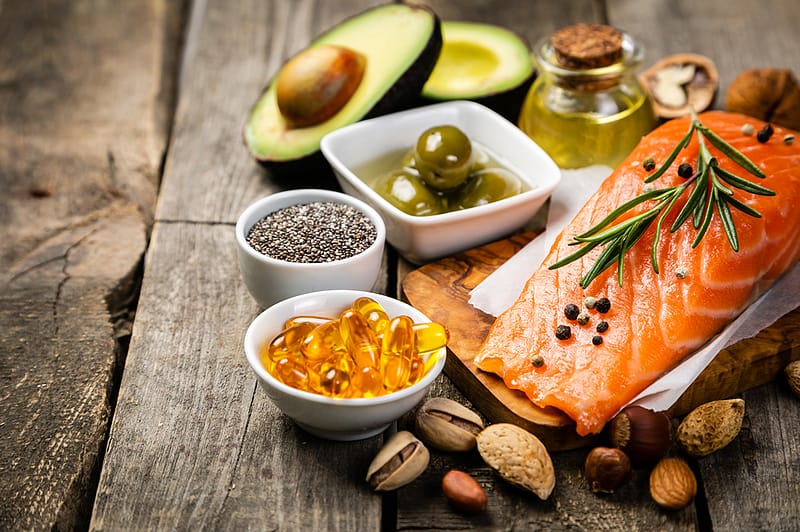As a method of weight loss, intermittent fasting is enjoying a surge of popularity. Unlike fad diets that come and go, however, it’s backed by research and is one of the only weight loss methods that have health benefits beyond weight loss.
Also unlike fad diets, intermittent fasting is not a diet at all. It doesn’t restrict what or even how much you eat. Instead, it concerns when you eat. There is no food group off limits and no meal plan you have to follow with intermittent fasting. It gives the benefits of calorie restriction without actually restricting calories.
Diets are, by nature, restrictive and can be hard to follow long term. With intermittent fasting, you don’t have to count calories, buy expensive meal plans or give up your favorite recipes. It’s also easier to maintain than many weight loss methods because it can actually simplify your life instead of making it more complicated.
If you’ve tried diets and have found it hard to lose weight or maintain your ideal body weight, intermittent fasting might be a solution for you.
How It Works
Intermittent fasting is the practice of eating within set time periods, or windows, giving your body more time between meals to process food, do cellular repair work and use stored body fat as fuel.
Intermittent fasting works for weight loss by burning your body’s fat stores. By about 12-14 hours after your last meal your body has used up easy-to-access glycogen stores and turns to the body’s stored fat for fuel. Most of the time we don’t get into this fat burning mode because we don’t tend to go more than 12 hours without eating.
Lengthening the time you go between meals allows insulin levels to drop and decreases the body’s access to simple sugars that are needed for metabolism. When insulin levels decrease to a low enough level for a long enough time, our bodies start using stored energy—including stubborn belly fat—for fuel. When the body switches to the use of fat burning for energy, a series of reactions occur that are not only helpful in weight loss but also for other health benefits including longevity, better brain function, increased energy and reduced inflammation.
Intermittent fasting can also help reduce the cravings that cause you to eat more than you actually need. Lowering insulin levels stops the cycle of cravings/overeating/more cravings that cause excess calories to be stored as fat.
There are different approaches to intermittent fasting but all them in some way decrease the body’s access to simple sugars for fuel in order to enter the fat burning mode. With some methods, you fast for a certain amount of time each day. For other methods you fast a few times per week or on alternating days. Read on for an overview of the different approaches and see which one might work best with your lifestyle.
Common Approaches To Intermittent Fasting

Daily Fasting
There is no one correct way to practice intermittent fasting. What’s important is to go long enough between meals— at least several times per week—to enter the fat-burning state of ketosis.
One of the most common approaches is to fast for about 16 hours per day and have all your meals within an 8 hour window. If that sounds too hard, think of it as a slight modification of how you probably already eat. If you finish dinner by 6pm and don’t have breakfast until 10am, for example, you’re already fasting for 16 hours. During your fasting hours, you can (and should) drink water and liquids like tea and coffee (with no added sugar) and bone broth. Typically, when you fast overnight this way, you don’t feel too deprived, if at all, before it’s time to have your next meal. This might translate into having two larger meals per day instead of three.
If 16 hours seems too long initially, you can start by fasting for 12 or 14 hours and work your way up to 16 over time. Alternatively, if 16 hours is easy, you might try fasting for 18 hours or more to give yourself extra time in the fat burning state.
However long you choose to make your fasting period, you don’t need to limit your caloric intake when you start intermittent fasting—especially if you’re very active. Remember, the idea isn’t calorie restriction, but a way of accessing your body’s fat stores for fuel.
Weekly Fasting
If a daily fasting plan doesn’t work for you because of your schedule or other reasons, you might choose to fast every other day or use a 5:2 method where you eat normally for 5 days of the week and fast for two days of the week. With either of these methods, you limit yourself to 500 to 600 calories on fasting days. With these approaches, you may not see results as quickly as with daily fasting but they can be easier to adapt to for those who have a harder time with daily fasting.
Fasting affects everyone differently. Many people experience fewer cravings due to lower insulin levels. Others may become irritable and cranky as they adjust to not eating every few hours. The only way to know how your body will respond is to try it and adjust your fasting times or days for what makes you feel good and maximizes your results. You’ll get the best results when you combine intermittent fasting with healthy, whole food nutrition and moderate exercise.
What the Research Says
Hundreds of animal studies and a growing number of high quality studies in humans are providing a growing body of evidence of the benefits of intermittent fasting.
Research in humans so far indicates that beyond weight loss, intermittent fasting can help with maintaining ideal body weight over time, managing blood sugar levels, slowing the aging process and increasing longevity. It may also improve cardiovascular health, help lower or normalize blood pressure and decrease inflammation, a major contributor to many chronic diseases. Improvements in mental sharpness and brain health are also being researched. Some of the research that suggests potential health benefits of intermittent fasting is listed below:
- A study published in the Journal of Clinical Investigation indicates intermittent fasting increases human growth hormone (HGH). Sometimes called the youth hormone, HGH stimulates muscle growth, cell reproduction, and cell regeneration.
- A review article in the New England Journal of Medicine shows evidence is accumulating that intermittent fasting can increase longevity and decrease the incidence of some types of diseases including cancer.
- A study published in Nutrition and Healthy Aging 2018 indicates that intermittent fasting may help reduce blood pressure and contribute to weight loss without calorie restriction.
- A study published in Nutrition Research suggests intermittent fasting produces an anti-inflammatory effect. Reduction of inflammation can help prevent chronic diseases and decrease weight gain.
- A study published in Nutrition suggests intermittent fasting may help improve brain health and cognitive function through reduction of inflammation.
Intermittent Fasting is Not For Everyone
While the research on intermittent fasting is promising, it’s critical to check with your doctor before starting. There are some people who should not practice intermittent fasting and your doctor will be best able to guide you in your decision. You should not attempt intermittent fasting if you:
- Have diabetes—especially type I diabetes—because blood sugar levels may become too low without consistent calorie intake.
- Experience drops in blood sugar levels when you go too long between meals making you feel dizzy, lightheaded or nauseous
- Are pregnant or breast feeding
- Have a history of disordered eating. Those with a history a eating disorders should only practice intermittent fasting under the guidance of a medical practitioner
- Are under 18 years of age
If you do try intermittent fasting and find you have trouble sleeping you should stop. Lack of sleep is harmful to your overall wellbeing. Also, if you find you’re lacking in concentration or experiencing extreme fatigue, intermittent fasting may not be right for you.
If you’ve tried intermittent fasting, please leave a comment and share your experience.



